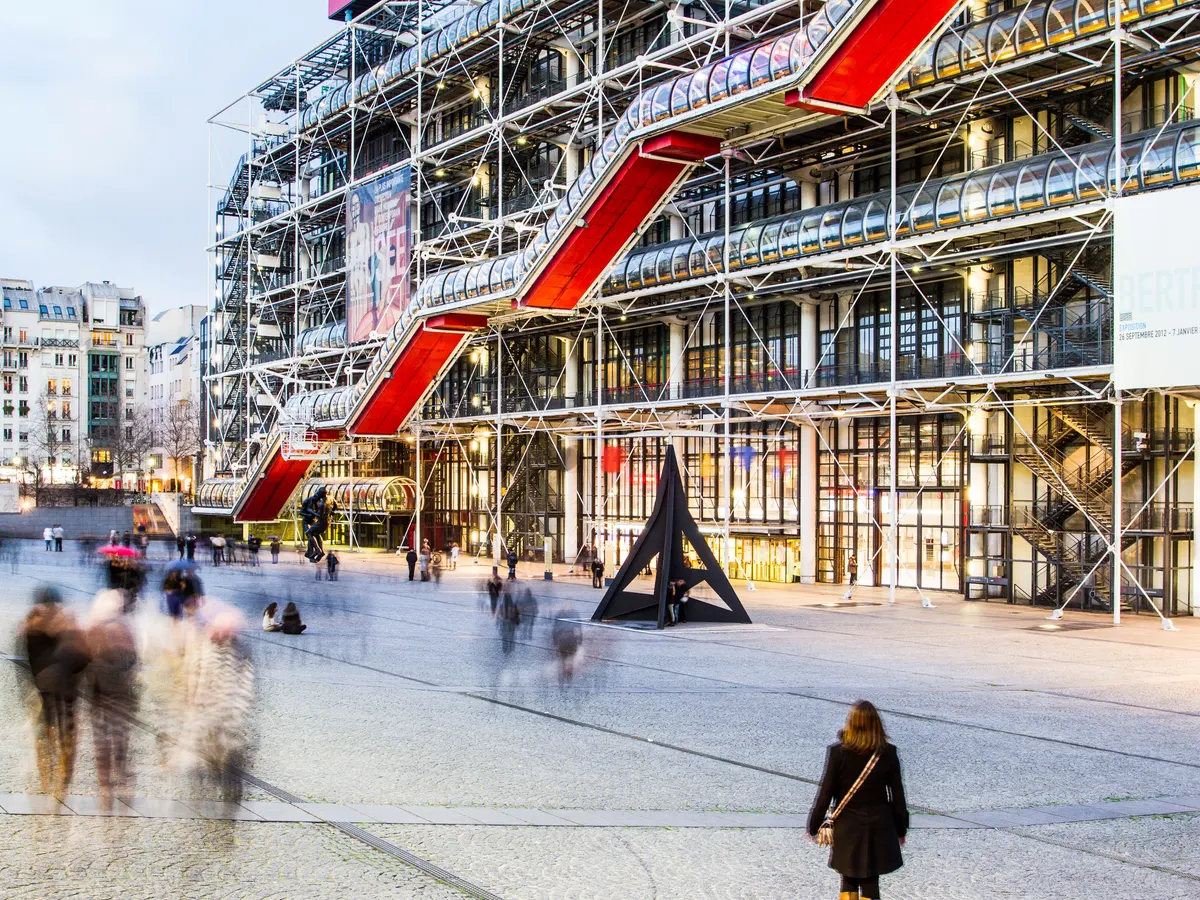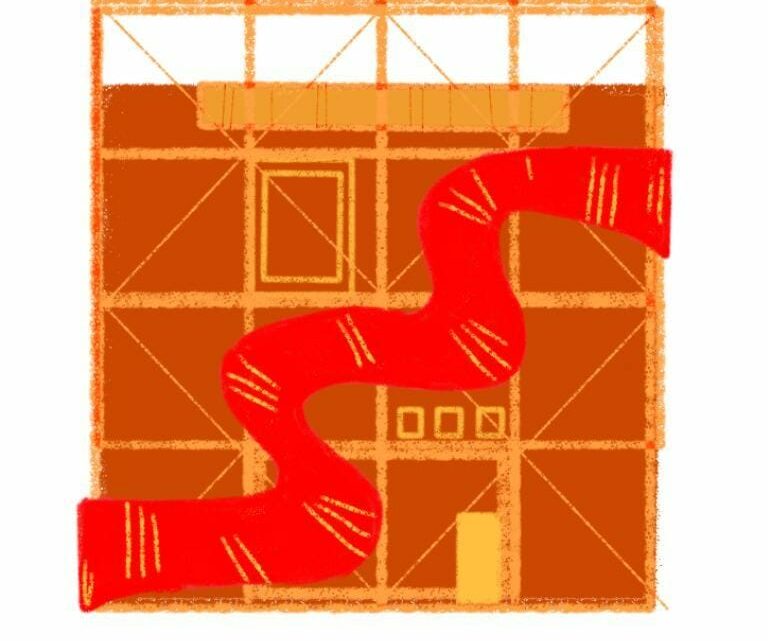The Future of Public Art
In 1977, the president of the French Republic unveiled one of Paris’ most important artistic landmarks and, according to some, one of its biggest eyesores. Residents of the Beauborg district now had one less parking lot – instead, they witnessed the construction of a big, colourful, and eccentric new building.[i] Despite its appearance as “something between an oil refinery and the deck of a container ship”[ii], the new space was a museum, library and cinema, known as the Pompidou Centre. It gave a new character to the neighbourhood, once best known for poverty and prostitutioni. Beauborg was now a site that represented the progressive social spirit of the sixties and seventies through architecture and art. And although finding a parking spot would have been easier before, the new construction gave space to study, assemble, and createii. The Pompidou Centre is an example of one of the uses in which art has a massive potential for the future. Public art (both in the sense of works of art in public and publicly accessible spaces for interacting with art) can shape communities, encourage education and create a more pleasant living space.

Centre Pompidou in Paris, France, picture taken from: Alamy
This all may seem pretty matter of fact. Is there a point in thinking about the role of public art in the future? Is there anyone who would oppose seeing pretty things and any community that is not already thinking about improving in this sense? Public art has been identified as bringing with it many advantages. Not only does it have the role of beautification, it can culturally shape a community, help address social issues that affect said community and help with urban revitalisation[iii], as was seen in the example of the Pompidou Centre. Nevertheless, the issue is not so straight forward. Because concepts such as ‘pretty things’ and ‘improving a community’ are indeed very complicated.
First, as far as ‘pretty things’ go. Does public art need to be planned? Are we counting graffiti and spontaneous installations as examples? Cases can be made for both. If revitalisation and more systematic ideas of beautification are our priority, then a case can be made for a narrow view of public art, one which is planned by a community (usually we speak of municipalities and neighbourhood leadership here). Conversely, if public art is meant to shape a community, especially if it is meant to be interactive and socially aware, as broad a definition of public art as possible would be of interest. As with most things, something in between is probably best. Public art must intrinsically be linked to the community, if its role in it is to be worth anything. The public is also the one who receives this kind of art, so its participation and perception is crucial[iv]. One the other hand, we might be asking too much of public art[v]. It needs to address important causes, be a perfect condensation of the essence of a community into a piece and have a deeply personal meaning to every member of the public. This is where the question of a true improvement of a community comes into play. Sometimes, public art can be a beautification process, one that does not make a difference politically speaking. A beautification process that takes into account the nature of the community, but a beautification process nonetheless. Conversely, public art also is not necessarily best when it is organic. To return to the Pompidou example; it was carefully planned, had a strict agenda and it circumvented the community in some (although superficial) ways. As previously mentioned, it was not considered beautiful by some people. It furthermore did not adhere to some urban planning standards as far as its size wentii. But it still filled an important gap, identified what the community needed most.
By now, some of you will have raised your eyebrow. All this talk of urban revitalisation and community improvement rightly reminds you of one thing – gentrification. Indeed, efforts to shape communities with art in mind should never be an excuse to gentrify. But although urban revitalisation might sound like a dog whistle for exactly that, it does not have to be so. Why did the Pompidou not gentrify? But it did! Some might add. It is true that Beauborg nowadays does not give the impression of the impoverished neighbourhood it once was, but this likely has more to do with the expansion of the city than with the centre itself. The reasons the Pompidou Centre was rather a successful example of urban revival were threefold. Firstly, it did not displace. I have already mentioned that it was built where a parking lot once stood. This is quite different than standard gentrification practicesi, such as evicting families to open boutique galleries. Secondly, it recognised the context in which it was built. The architects were aware of the social unrest in Paris right after the student protests of 1968, they were knowledgeable of the neighbourhood they were building in, and they wanted to elevate and celebrate those aspects, not squander themii. Thirdly, and connected to the previous point, the construction of the centre had a clear plan. Not to be mistaken, gentrification efforts also often have clear plans. But compare setting up galleries in the red light district as part of the 1012 project with the agenda of ‘this neighbourhood is problematic and we must clean it up’[vi], to building the Pompidou Centre with the agenda of ‘this city needs a functional contemporary art centre that is good’, and the difference between gentrifying plans and genuine revitalisation plans becomes clear.
Every city and community, by virtue of existing, has a future. I do not mean this in the optimistic sense, but in the quite literal temporal sense. What can ensure the transformation of the word future from a purely temporal term to an optimistic one is that we do not let our cities become stale. The city will develop and it is up to us to make this development positive. Public art is one of these practices that can contribute to a positive development. Its benefits range from forming the community and revitalising it to creatively transforming a previously unused space. The positive impact extends even beyond this in successful cases of public art and public art spaces, such as the Centre Pompidou. If a construction becomes an integral part of a space and people continue using it, this is the most environmentally friendly way of thinking about urbanism. As architect Carl Elefante famously said: “The greenest building is the one that already exists.”[vii]
[i] Ulusoy, N. & Turkan, Z. “Contradicting Naked Space: Centre Pompidou With Its Historical Surrounding.” Journal of Near Architecture5 (2021): 65-84.
[ii] De Monchaux, T. “The Original Shock of the Pompidou Center.” New Yorker, January 22, 2022.
[iii] Brennan, Jan. “Public Art and the Art of Public Participation.” National Civic Review 108, no. 3 (2019): 34–44.
[iv] Zebracki, M. “Beyond public artopia: public art as perceived by its publics.” GeoJournal 78 (2013): 303–317.
[v] Sharp, J, Venda P, and Ronan P. “Just Art for a Just City: Public Art and Social Inclusion in Urban Regeneration.” Urban Studies 42 (2005): 1001–23.
[vi] Devaney, M. B. “Amsterdam’s sex workers: the unlikely victims of gentrification.” The Guardian, January 15, 2016.
[vii] Adam, R. “The Greenest Building is the One That Already Exists”. Architects‘ Journal, September 24 2019.
Lina Leskovec is a third year political science student at UvA. Before moving to Amsterdam, she lived in Slovenia. Specialising in political theory, she has an interest in philosophy and its practical application. Other than that, she enjoys reading, art and chess.


